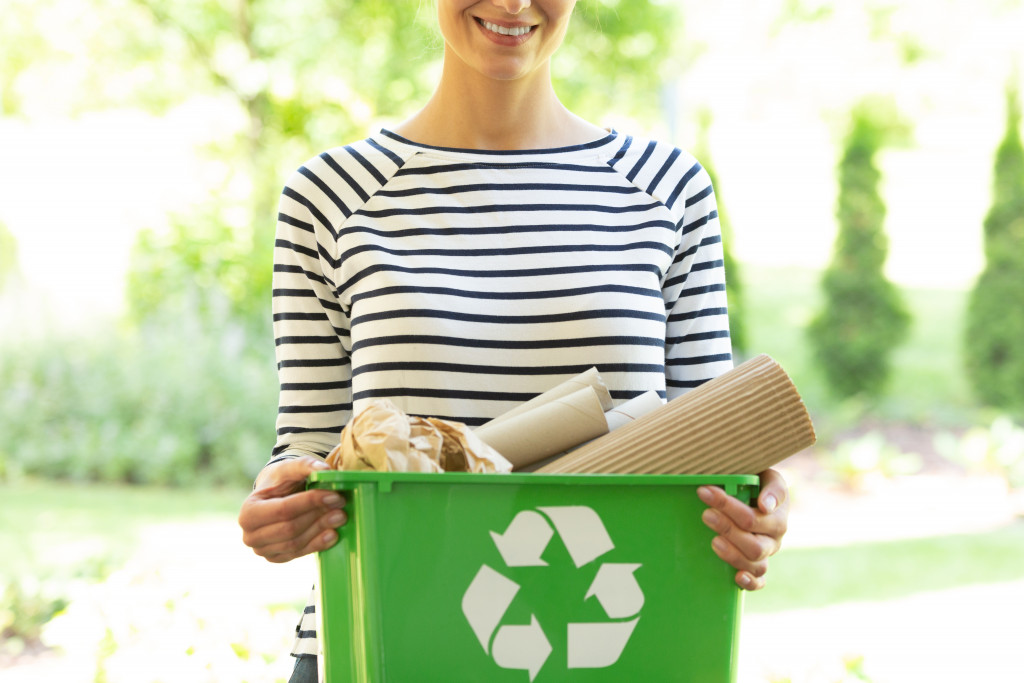The benefits of waste management are innumerable. Not only does waste management help preserve the environment and keep the planet clean, but it also helps conserve valuable resources. According to the Environmental Protection Agency (EPA), the United States generates about 254 million pieces of trash annually. That is enough to fill 63,000 garbage trucks per day” (EPA). If people do not adequately manage waste, it can pollute the air, water, and land. It can also create health risks for people and animals.
The good news is that there are many ways for people to reduce their waste footprint. A straightforward way is to recycle more items. According to the EPA, recycling one aluminum can saves enough energy to power a TV for three hours (EPA). In addition to recycling aluminum cans, people can recycle plastic bottles, paper products, glass jars and bottles, and more.
However, there are still a few items that people often do not recycle. Here are a few items to consider in addition to the standard recyclables that every homeowner should consider.
Food Scraps
The first thing people do with food waste is to throw them away. It will be one of the most comfortable things to do. However, this convenience will surely come with a price. According to the EPA, the average person throws away about one pound of food waste daily (EPA). That adds up to about 365 pounds of food waste per year.
While some might believe that food scraps will just get thrown away, they often end up in landfills. Once in a landfill, the organic waste decomposes and releases methane gas into the atmosphere. Methane is a much more potent greenhouse gas than carbon dioxide (CO2). In other words, throwing away food scraps creates pollution and contributes to climate change.
A better way to deal with food waste is to compost them. Composting breaks down organic matter, such as food scraps, into a usable soil amendment. It is an excellent way to reduce methane emissions and help the environment. You can find ways to collect food scraps efficiently.
In addition to reducing methane emissions, composting has many other benefits. For instance, it helps improve soil health, reduces the need for chemical fertilizers, and reduces water pollution.
Composting is easy to do at home. You only need a bin or container, some organic matter, and a little water. Once you have these items, you can start composting your food scraps.
Used Cooking Oil

Cooking oil is another item that people often throw away. While it might seem small, cooking oil can have a significant environmental impact.
According to the EPA, used cooking oil accounts for about 1.4 billion gallons of waste per year (EPA). Most of this oil ends up in landfills, where it can pollute the soil and water.
In addition to polluting the environment, cooking oil can also be a fire hazard. If not disposed of properly, it can easily catch fire and cause property damage.
The best way to dispose of used cooking oil is to recycle it. A UCO recycling company can utilize it. Once the oil is recycled, it can turn into biodiesel. Biodiesel is a renewable fuel that can be for power vehicles. You can also recycle cooking oil in your home.
Not only is recycling used cooking oil suitable for the environment, but it can also save you money. Recycling facilities will often pay for used cooking oil. So, recycling your used cooking oil is a win-win for you and the environment.
Paint
Another item that people often throw away is paint. Paint cans can be challenging to recycle because they come from multiple materials, including metal, plastic, and glass. However, some companies specialize in recycling paint cans.
In addition to recycling paint cans, you can also recycle the actual paint. Most hardware stores have programs that allow you to recycle leftover paint. The paint then gets donated to organizations, such as Habitat for Humanity, that use it for their projects.
Donating your leftover paint is a great way to reduce waste and help others.
E-Waste
E-waste is a growing problem. As technology advances, people are upgrading their electronics more frequently. This situation has led to an increase in e-waste.
According to the EPA, the United States generated about 3.5 million tons of e-waste in 2017 (EPA). Most of this waste ends up in landfills, where it can pollute the soil and water.
E-waste contains lead and mercury, both harmful chemicals when mishandled. These chemicals can cause disturbing health problems for people and animals.
The best way to deal with e-waste is to recycle it. Many recycling facilities will take your old electronics and recycle them properly.
When recycling your electronics, be sure to find a reputable recycling facility. Some facilities might not recycle the electronics properly, which can cause environmental problems.
Final Thoughts
These are some of the items that you should consider recycling. Recycling these items can help reduce pollution and save the environment. However, find a reputable recycling facility to ensure that the items are recycled properly. The recycling lifestyle will be challenging to maintain, but it will be worth it for the world.
